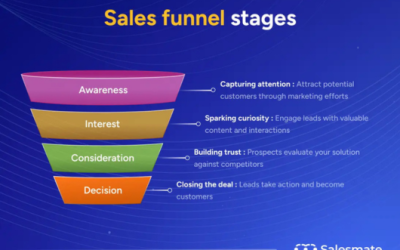When we hire a new employee – salesperson, administrative assistant, marketing strategist, or accountant – it is our desire as business owners that they become internal brand advocates. Internal brand advocates are excited about their jobs and the products they sell. They paint a positive picture around their company. The business owner does not have to worry about what the employee will say. They can trust the employee.
There are many books and articles about strategies to build brand/employee advocates. Many of them are very good. In this article, we would like to take a different strategy. We want to look at your CRM not only as a tool to sell more but as a tool to help build employee advocates within your organization.
In an earlier article, we wrote about the foundation of a successful CRM implementation. A proper CRM implementation is configured to your business goals. If you would like to read more about this, you can read Drive your CRM Implementation to Success Based on Your Business Goals. This foundation is key to building employee advocates because if you don’t have or know your business goals, it will be tough to get them excited and onboard.
Making employee advocates starts with sharing your business goals.
As business owners, we have business goals that we want to achieve which usually include attracting new and retaining old customers. A business goal may also include branching out into new territories to expand your business. Share your business goals with your employees and explain the reason behind them. Tell them how you would like them to use your CRM as a tool to reach the goals. Not only does this give them direction and purpose, but they can also work as a team and use the CRM to identify gaps and find opportunities. When you share your business goals, your CRM can be used as a tool for staff to work together to achieve those goals.
Making employee advocates starts with you as the leader using your CRM
All too often, business owners and sales managers introduce a new process or software but do not lead by using it. When they expect their employees to use it or follow it, but do not do the same, they do not create employee advocates. Instead, they might be creating skeptics, or even worse, hypocrites. In our CRM implementation article, we talk about business owners leading by using the CRM. If you want your employees to be advocates, it starts with your leadership. If you introduce a new platform like a CRM, then you need to lead by using it. Implementing your CRM and motivating your sales team to follow your sales process will be successful when they know you are completely on board and believe in what the new platform can do to grow the company.
Making employee advocates starts with measuring results
It doesn’t matter what people are doing, they are motivated by results. If someone is working out at the gym, they want to know now if they are getting stronger. If a business owner is getting qualified leads through social media, they want to know what they can do to make it more effective. Everyone is motivated to do more by results. It is no different with your business, which is why it is important to use your CRM to show results. You can start making employee advocates when you create dashboards and reports in your CRM that show progress. Employees start believing in what they do when they see they are making a difference. Use your CRM dashboard to show and measure results. If you would like to learn more about this, you can read Use Your CRM Dashboard to Track Your Goals.
Conclusion
Your CRM is more than a sales tool. It is also a business intelligence tool and a tool for building employee advocacy. We love to see businesses succeed and we know that a CRM can help your success in more ways than one. If you are not using a CRM, contact us at 301-332-0613 or fill out the form to schedule a demo of X2CRM.





